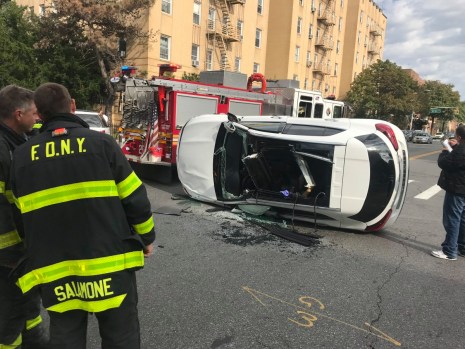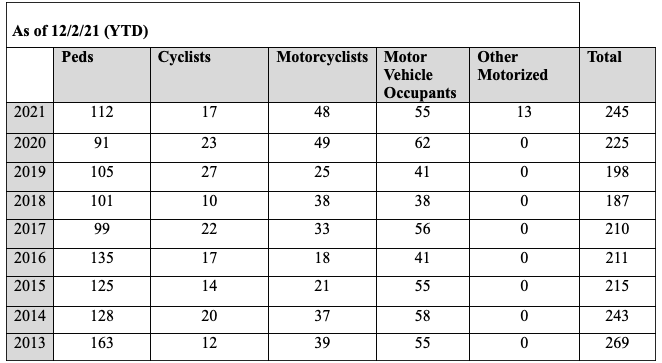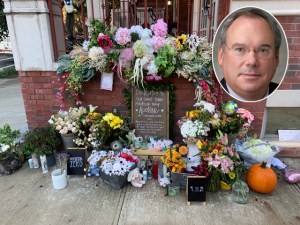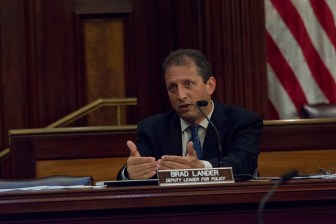Amid Bloodiest Year of Vision Zero, DOT Finally Begins Safety Classes for Reckless Drivers


There are thousands of car drivers so reckless that they have racked up more than 14 camera-issued speeding tickets or more than four red-light tickets in the last 12 months and are legally required to attend a city-run safe-driving class.
Well, nineteen have done so.
Late last month and again last Wednesday, the Department of Transportation finally conducted safety classes required by law under the Dangerous Vehicle Abatement Act, a law that took the de Blasio administration more than 18 months to finally fund and get off the ground. The first two 90-minute, in person, sessions educated 19 drivers, according to the agency.
Another 141 reckless drivers have been sent letters advising them that they must take the course within 45 days. The letters started going out in the first week of November. The classes were held in Manhattan.
The agency declined to give details about the substance of the classes or who is teaching them. But a DOT spokesman said that eight people had been hired, thanks to $1.75 million in funding covering the period between July 1, 2021 and June 30, 2022. Going forward, the funding baseline will be $1.5 per year.
“In addition to our other Vision Zero work, this new program will help us to educate offenders about safe driving practices and address the ongoing pandemic of reckless driving,” said the spokesman, Vin Barone.
The classes are part of an historic measure passed by the City Council in 2019 that requires the city’s most reckless drivers to take a safety class or risk having their car seized by city marshals. The “most reckless” are defined as any driver who is hit with 15 or more camera-issued speeding tickets or five camera-issued red light tickets in any 12-month period. Streetsblog estimates that there are thousands of drivers who have met that threshold since Oct. 26, 2020, when the clock started ticking.
The program had been delayed by more than a year because, first, the de Blasio administration eliminated funding for it in the first days of the pandemic, and then because DOT’s negotiations with a provider of such classes broke down for reasons that remain unclear.
Drivers who complete the class are not out of the enforcement woods just yet. Receiving even a single camera-issued ticket within six months of taking the class will require the owner of the car to take the class again, Barone said.

The Dangerous Vehicle Abatement Act was created to close one loophole in state law: Because camera-issued tickets do not count against a driver’s record, drivers who paid their automated tickets — which are only $50 compared to much higher fines for police-issued tickets — were able to remain behind the wheel with no state action, even though just three human-issued speeding tickets is enough to trigger a license suspension.
But it only closes that loophole if the safety courses are intense and drivers who transgress the instructions or skip the classes are, in fact, sanctioned. In one infamous case, a recidivist reckless driver who was arrested after cops caught him driving with a suspended license was required to take a similar safety class that was run by the Brooklyn Justice Initiative and Center for Court Innovation. That driver, Tyrik Mott, ended up getting 26 more school-zone speed camera and red-light tickets in the weeks after completing the course, culminating in causing a crash that killed a 3-month-old baby at a Brooklyn intersection on Sept. 11.
The final year of Mayor de Blasio’s tenure has also been the bloodiest on city roadways. According to the Department of Transportation, more people were killed in crashes through Dec. 2 this year than during any year in the Vision Zero era.

After initial publication of this story, Council Member Brad Lander, who authored the Dangerous Vehicle Abatement Act, said he was pleased that the DOT had finally launched the classes — but vowed to continue the fight for safe streets when he takes over as city Comptroller on Jan. 1.
“This is just a beginning,” he said. “This is just a toe in the water for all the new tools we need to address repeat reckless driving and developing a more comprehensive array of strategies. Tools such as better road design are well understood, but have not been implemented at the level we need. And on the work of behavior change and consequences for reckless driving, we don’t have anywhere near that set of tools and evidence of what works and then developing an ambitious strategy. I hope we learn more as we implement these classes, such as to what extent people do or don’t change their behavior. That’s critical as we figure out how to scale up the program to combat reckless driving behavior as part of the broader Vision Zero work.”


